Anatomy of a Backpack – Definitive Guide to Parts, Straps, Loops and more
April 25, 2019 Learning GuideSplayed backpacks, daisy chains, frame sheets… what?
Yeah we get it, describing the different parts of a backpack can sometimes sound like gibberish. This can be notably confusing when shopping for a new backpack online.
This guide was put together to identify the different parts of a backpack and their functions. From the basic anatomy of a backpack to a deep dive into shoulder strap and opening styles, consider this your comprehensive guide to backpack parts and definitions.
Table of Contents
- The Basics: Anatomy of a Backpack
- Backpack Straps Explained
- Types of Backpack Shoulder Straps
- Types of Access and Opening Styles
- Loops and Attachments Explained
- Backpack Frames and Sheets
The Basics: Anatomy of a Backpack
A good place to start is with the most basic parts of a backpack. These are the universal terms that can be applied to any backpack regardless of style.
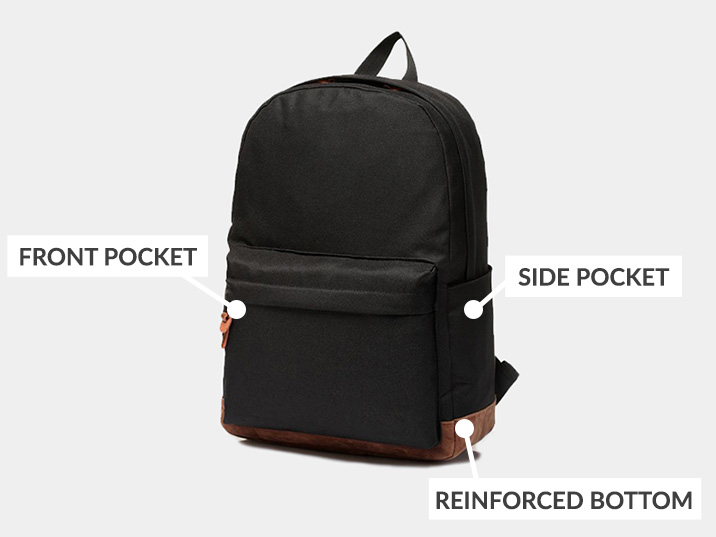

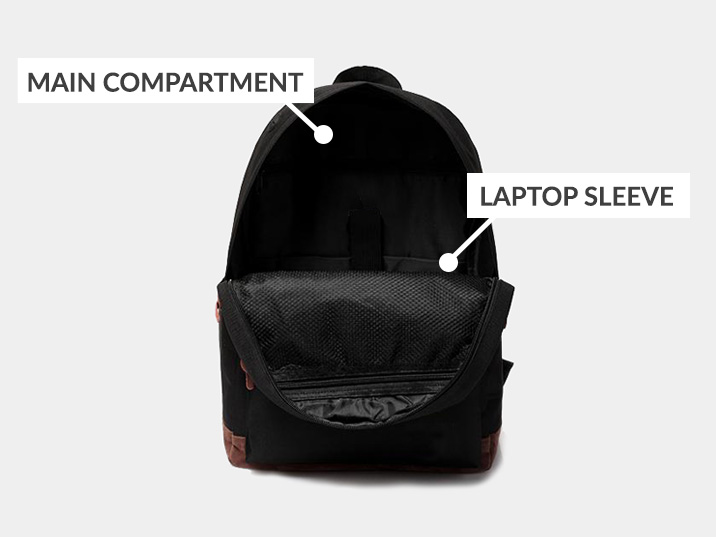

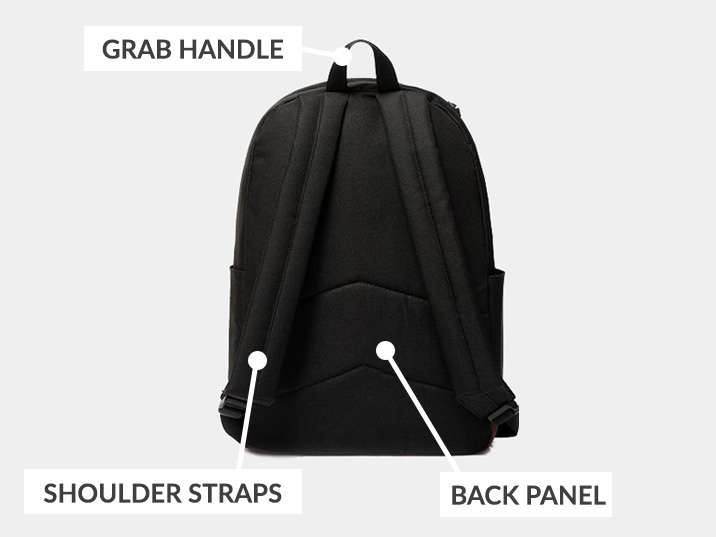




Anatomy of a backpack definitions
Main Compartment
The largest pocket in the backpack is called the main compartment.
Front Pocket
A smaller zipper pocket found on the front of the backpack for quick access to smaller items like pens, wallets or cell phones.
Side Pocket
Narrow and deep pockets found on the side of a backpack. Usually used to hold water bottles and umbrellas. Some backpacks add velcro or zippers to keep these pockets closed when not in use.
Reinforced Bottom
Usually made of leather or another tough synthetic material. This feature prevents the bottom of the backpack from premature wear and tear when being placed on the ground. Not all backpacks have this feature, but it’s a nice addition and one to look out for when shopping for a new backpack.
Laptop Sleeve
A special pocket to store a laptop or tablet usually found in the main compartment. Some backpack have a simple nylon or polyester sleeve while others have a padded sleeve. Laptop backpacks tend to have their own separate laptop compartment altogether.
Grab Handle
A grab handle is attached to the top of a backpack for easy handling and for the ability to hang up the backpack on a hook when not in use. They can vary from a simple nylon strip to a cushioned handle with grips.
Shoulder Straps
Shoulder straps are what allow you to wear a backpack. Many backpack brands have engineered their shoulder straps to a science, allowing for comfortable weight distribution and ergonomic wear.
Back Panel
The area where the backpack rests on your back. Some backpacks include extra back features to aid in overheating or have special padding for comfort. These features can be different with every manufacturer.
Backpack Straps Explained
Let’s take a closer look at the various backpack straps and how they affect your carry. While all backpacks have shoulder straps to enable the bag to be carried on your back, many large and heavy backpacks also include sternum straps and hip belts to help distribute weight. If you want to learn how to properly adjust your backpack’s straps for a proper fit please take a look at our 3 step guide on how to fit a backpack.
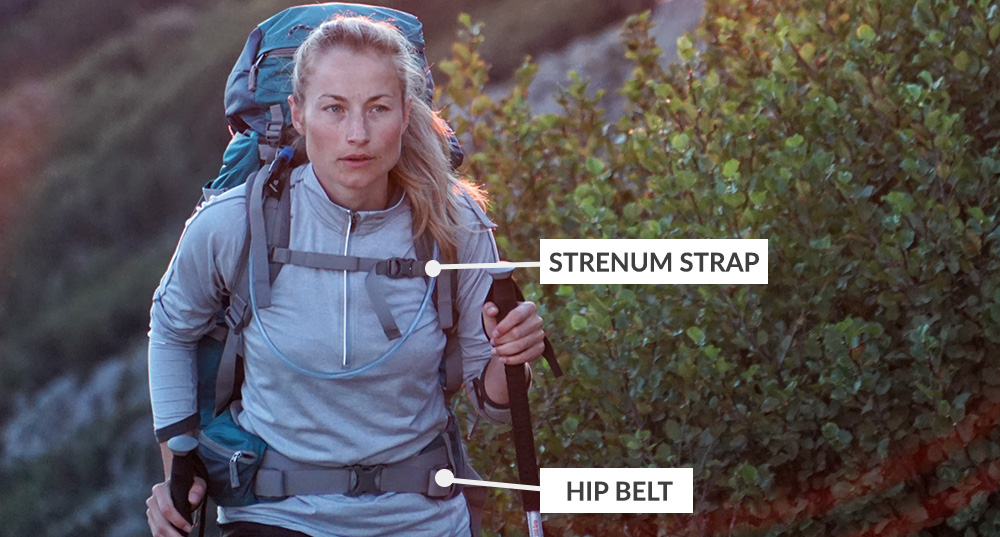

Shoulder Straps
Shoulder straps help evenly distribute your load between both shoulders. Most shoulder straps are adjustable to help correctly position the backpack on your back. Width between shoulder straps also determines comfort. One of the main differences between men’s and women’s backpacks is the width between shoulder straps.
Hip Belt
Also sometimes referred to as a waist strap, a hip belt is a padded strap that goes around the top of your hip bone to help redistribute the backpack’s weight from your shoulders to your hip. Hip belts are most common in outdoor and travel backpacks that are designed to carry large and heavy loads.
Sternum Strap
The sternum strap, or chest strap, is a strap that clips across your chest to help alleviate strain from your shoulders. Think of it as a bridge between shoulder straps that improves the stability of the load. Sternum straps also help shoulder straps from sliding off your shoulder and prevents heavy backpacks from swaying back and forth when on the move.
Unlike hip belts that are usually reserved for travel and outdoor backpacks, sternum straps are also common with many daily carry backpacks that are meant for heavier loads such as school book bags.

Types of Backpack Shoulder Straps
Shoulder straps come in a few different flavors with each being better suited for a specific style of carry. When choosing a new backpack it’s important to pay attention to the style of shoulder straps in order to determine if the backpack will fit your needs. Below are the three most common types of backpack shoulder straps.
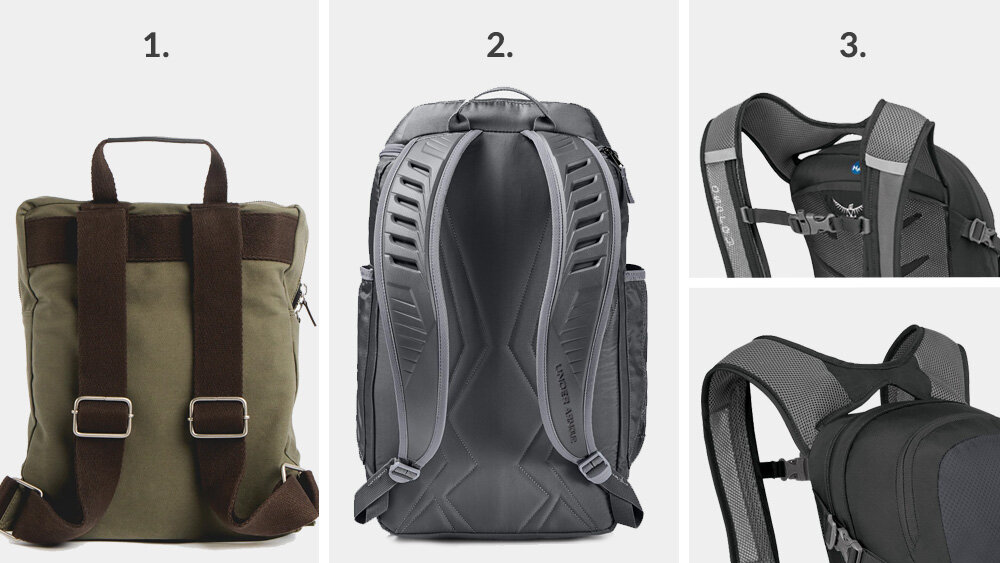

1. Straight
Straight shoulder straps are most common in fashion backpacks where long term wear of heavy loads isn’t a priority. Most bag manufacturers design straight shoulder straps to be adjustable so you can position the backpack on your back where it’s comfortable but that’s about where the ergonomic features end.
Although padding is typical, it’s also common to see straight shoulder straps made out of single pieces of nylon, canvas or leather and without any padding. Again, this style definitely puts more emphasis on looks than comfort so it’s best to avoid straight shoulder straps on heavy use backpacks.
Example: KOLO Portland Daypack (Topdrawer)
2. Curved
Curved backpack shoulder straps are designed to mimic the shape of your body for a more ergonomic fit. It’s common to see advanced padding and materials such as EVA foam, dual density foam and mesh lining for breathability paired with curved backpack straps to maximize the comfort of the backpack. Curved straps allow for comfortable long term wear of heavy loads. Because of this you’ll notice curved shoulder straps the most in travel, outdoor and laptop backpacks.
Example: Under Armour Undeniable 3.0 Backpack (Amazon)
3. One-Piece
One-piece backpack shoulder straps are easy to spot because both shoulder straps are (you guessed it) made of one piece of material and connected to a “bridge” at the top of the backpack. Some one-piece shoulder straps are designed so that the bridge portion of the backpack straps also act as a grab handle.
There are two things to consider when choosing a backpack with one-piece shoulder straps. First, you can’t wear the backpack too high on your back or else the bridge will start cutting into your neck and shoulders. Second, the shoulder strap width is completely fixed with one-piece shoulder straps so it’s important that you know how the backpack fits before you commit to wearing it. You’ll notice this type of backpack shoulder strap a lot in travel daypacks and outdoor backpacks where fit matters.
Example: Osprey Daylite Daypack (Osprey)
 The Ridge – 10% Off Sitewide with Coupon Code
The Ridge – 10% Off Sitewide with Coupon CodeThe Ridge exclusive coupon code and deals. 10% off weatherproof backpacks, wallets and more!
 Db – 15% Off with Exclusive Coupon Code
Db – 15% Off with Exclusive Coupon CodeDb Journey deals – 15% off with exclusive coupon code
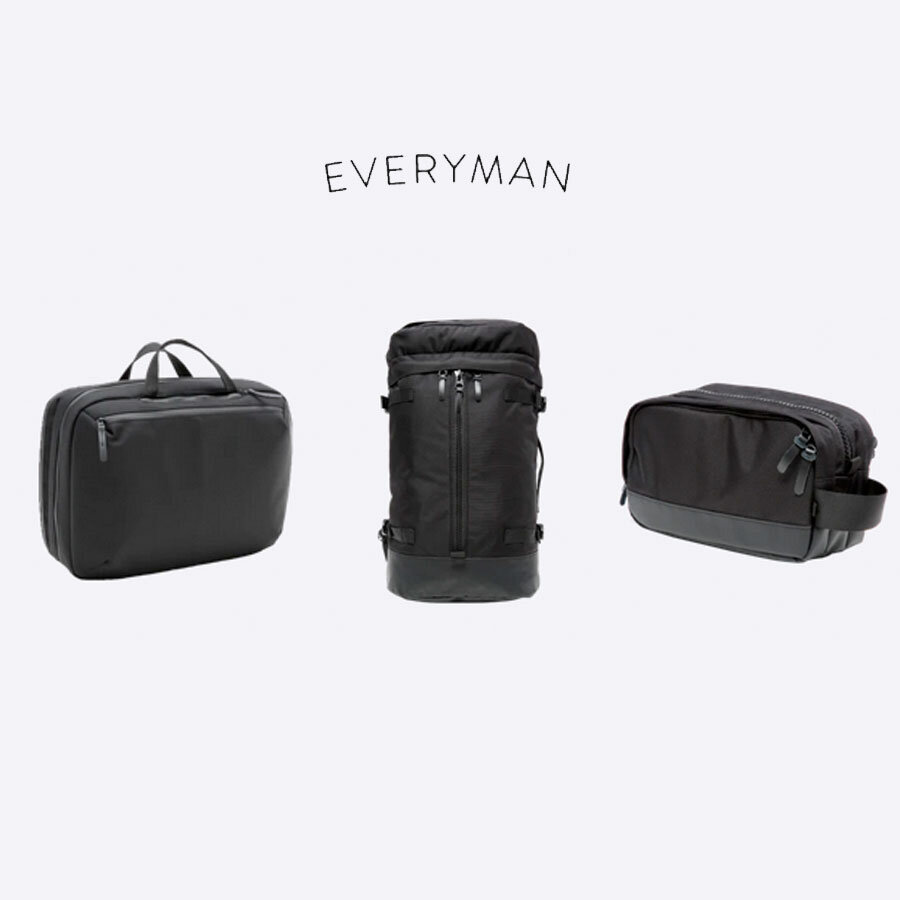 Everyman – 15% Off Sitewide with Exclusive Coupon Code
Everyman – 15% Off Sitewide with Exclusive Coupon CodeEveryman deals – 20% Off Sitewide with Coupon Code
 HEX – 15% Off Sitewide with Coupon Code
HEX – 15% Off Sitewide with Coupon CodeHEX deals 15% off sitewide with coupon code. Save on backpacks, duffels and more!
 Day Owl – 20% Off Sitewide with Coupon Code
Day Owl – 20% Off Sitewide with Coupon CodeDay Owl deals – 20% Off Sitewide with Coupon Code
 Solo New York – 15% Off All Bags & Cases with Coupon Code
Solo New York – 15% Off All Bags & Cases with Coupon CodeSolo New York deals – Save 15% with coupon code
 Chrome Industries – Save 10% with Coupon Code
Chrome Industries – Save 10% with Coupon CodeChrome Industries deals and coupon codes 10% off
 Filson – 10% OFF Your Next Purchase
Filson – 10% OFF Your Next PurchaseFilson 10% off offer
Types of Access and Opening Styles
When we talk about “types of access” we are describing the different ways you can enter a main compartment to get to your stuff. It’s important to note that the best type of access changes with the purpose of the backpack.
An example would be choosing the best backpack to wear for bicycling to work in a rainy city. Going with a rolltop backpack would be a good choice since rolltops are more water resistant than regular zippers.
There are dozens of main compartment access designs but here are some of the most common.
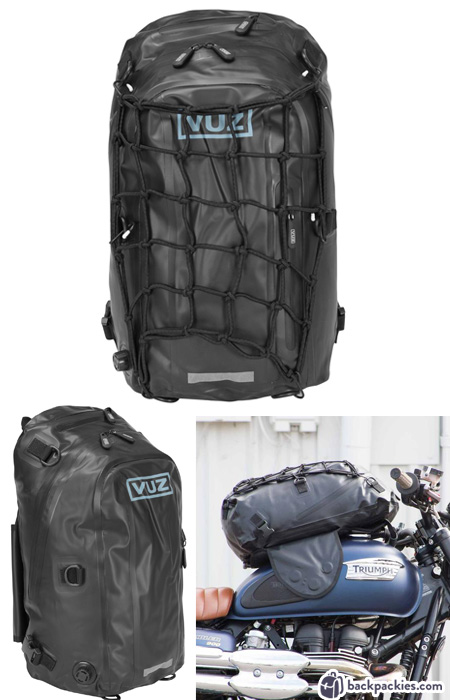

1. Top Access
Backpacks with top access allow you enter the main compartment from the top of the bag. Most backpacks with top access have what is called a lid which is the top piece of the backpack that allows you to zipper or buckle the backpack shut. While many backpacks with lids are zippered shut, others can also be cinched with a drawstring or buckled shut as outlined below.
Example: Under Armour Undeniable 3.0 Backpack (Amazon)
2. Front Access
Some backpacks include front zipper access to the main compartment in addition to or in lieu of top access. Front access backpacks have grown in popularity with gym and travel backpacks that are used for storing clothing in the main compartment. Front access allows the backpacks to be opened up like a traditional duffel bag when in use.
Example: Aer Fit Pack 2 (Gallantry)
3. Side Access
Side access allows for entry into the main compartment through the side of the bag. This is usually in addition to another form of entry. Side access is popular with photography backpacks for faster access to cameras and lenses. The style allows the wearer to sling the backpack to the front of their body and access the main compartment without having to take off the backpack.
Example: Peak Design Everyday Backpack (REI)
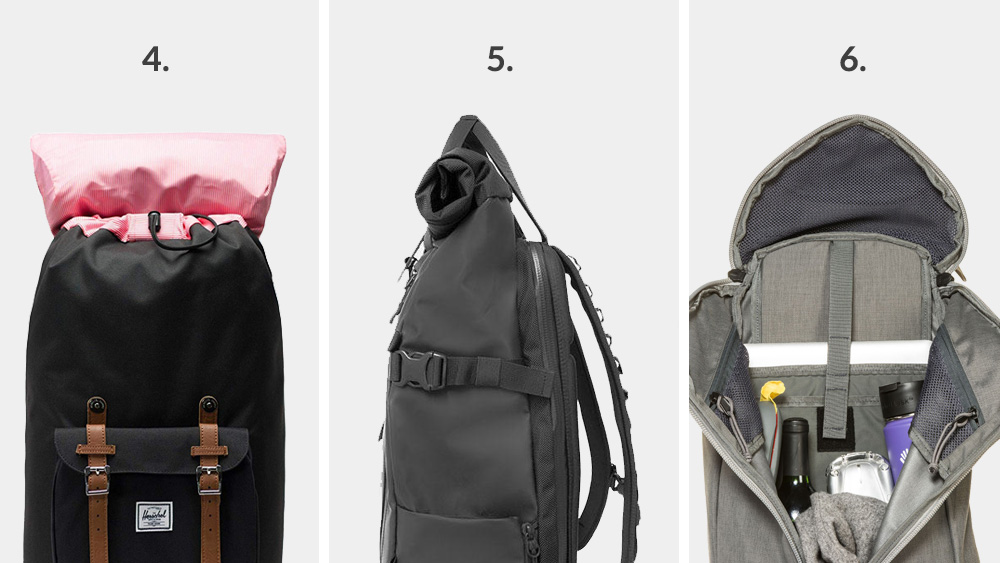

4. Drawstring
Drawstring openings use a cord to tighten and cinch the backpack shut instead of a zipper or buckle. This type of backpack opening style is almost exclusively used with top access backpacks and are commonly paired with a lid to cover the drawstring. Drawstring enclosures are often seen in rucksacks so that oversized items such as sleeping bags and tents can fit inside the main compartment vertically without having to close the backpack.
Example: Herschel Little America (Amazon)
5. Rolltop
Rolltop backpacks feature extra fabric on the top of the bag that you “roll” and compress to close. Rolltop backpacks do a better job a waterproofing the inside of a bag when compared to a zipper or drawstring opening and are popular with outdoor backpacks because of this.
Another feature of rolltop backpacks is the ability to compress or expand the main compartment as needed. Much like drawstring backpacks, this allows you to fit oversized items vertically into the main compartment.
Example: WANDRD PRVKE (WANDRD)
6. Y-Access / 3-Zip
Y-Access or “3-Zip” entry gives you the option of either entering the bag from the top or having full access to the main compartment through the front. This style of entry was popularized by Mystery Ranch with their 3-Zip design packs. This is a good access style for tactical and travel packs where accessing the entire main compartment is important.
Example: Mystery Ranch Urban Assault Backpack (Mystery Ranch)
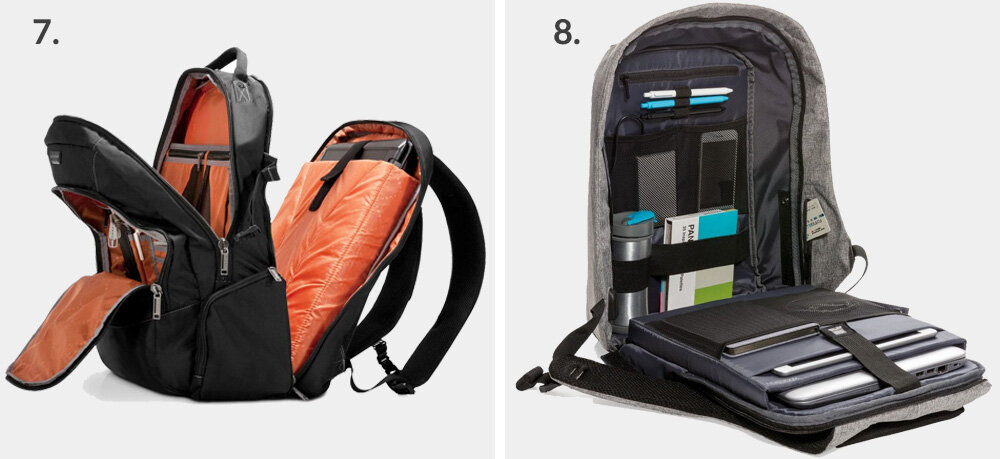

7. Splayed
Popular with work and tech backpacks that have multiple large compartments, splayed openings allow each compartment to fan out when unzipped for easy access to the contents inside. This style of access is great for organization and is a good fit for anyone who needs to carry things like a laptop, files and books in independent compartments.
Example: Everki Atlas Backpack (Amazon)
8. Clamshell
Clamshell openings feature zippers on three sides and a single attached side that acts as a hinge. This type of opening is preferred in backpacks where accessing the contents of the main compartment at once is important. Notable examples are tactical field bags, clothing compartments in travel bags and backpacks with lots of pockets lining the main compartment walls. Any backpack that opens like a suitcase can also be considered clamshell.
Example: XD Design Bobby Anti-Theft Backpack (Amazon)
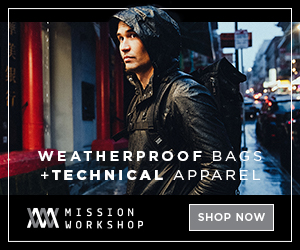
Loops and Attachments Explained
You may have noticed that many backpacks have a variety loops, straps and elastic cord attached to the outside. Although most of these elements find their origins in outdoor bags for hiking, rock climbing and snow sports they have seemed to creep their way into everyday backpacks for work, school and commuting.
Let’s take a look at some of the most common backpack loops and attachments and explain their purpose so you can finally answer the burning question what are the loops on my backpack for?
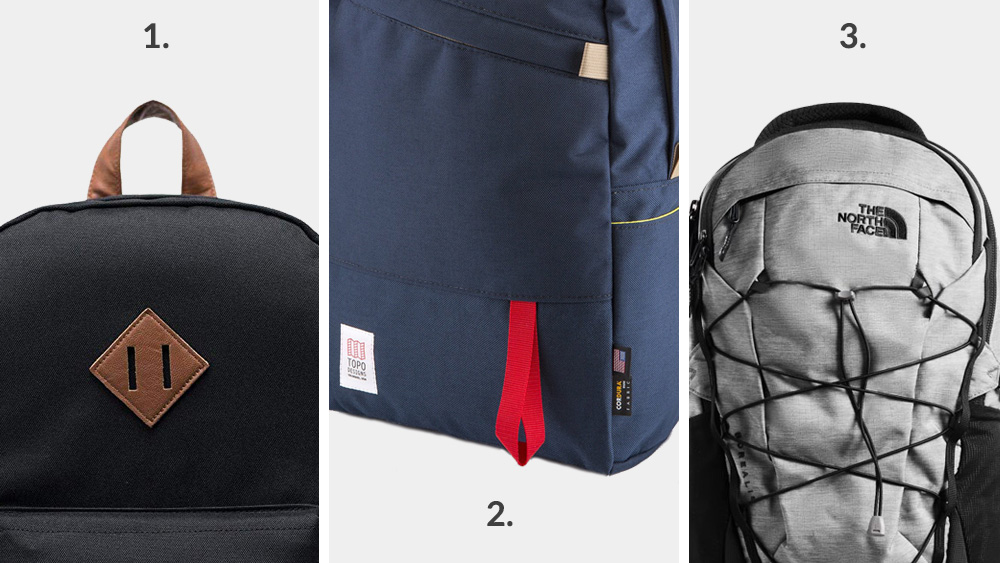

1. Lash tab
Lash tabs, also known as “pig snouts” are small leather patches usually found on the front of a backpack. These patches are attachment points for gear such as velcro straps, carabiners and bike lights. The most common shape of a lash tab is in the form of a tilted square or diamond shape but lash tabs can come in a variety of shapes and sizes. It’s most defining feature is two skinny slits that makes it resemble a pig’s snout.
While lash tabs were originally only found on outdoor bags, it’s now common to see lash tabs on everything from designer backpacks to school book bags as a decoration. It’s also common to see lash tabs made out of rubber or plastic for increased durability or water resistance.
Example: Herschel Supply Co. Heritage Backpack (Amazon)
2. Gear loops
Gear loops are common with outdoor backpacks used for climbing, backpacking and camping. Their original purpose is to attach long items such as ice picks, axes and trekking poles but they can also be used as a general attachment loop for anything from carabiners to rock climbing quick draws. Gear loops are commonly made of straps of nylon material that form a closed loop and are sewed into the body or waist belt of a backpack.
Much like lash tabs, gear loops can be sometimes found in fashion backpacks to give it an outdoor-inspired aesthetic.
Example: Topo Designs Daypack (Topo Designs)
3. Tie out loops and elastic cord
Tie out loops are small fabric loops that are sewn on to the sides or front of a backpack. They are just big enough to loop through elastic or bungee cord so that you can configure your own external attachment setup. Some backpacks only come with tie out loops while others come with an elastic cord already looped through.
The purpose of the elastic cord is so that it can be cinched down for secure attachment of anything that is too large or bulky to fit inside of the backpack such as a jacket, bike helmet or extra gear.
Example: North Face Borealis (Amazon)
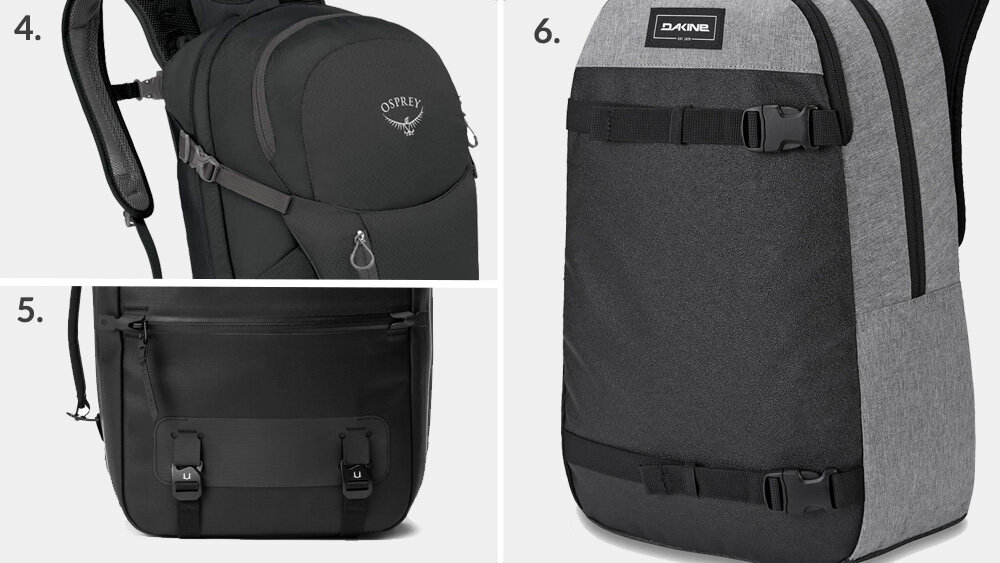

4. Compression straps
Normally found on the side of a backpack, compression straps are used to compress or expand the bag’s size. Compression straps are common in backpacks that are designed to hold a lot of weight such as hiking backpacks, travel backpacks and some school book bags because they allow for the backpack to be squeezed closer to your back for better weight distribution and a more comfortable carry.
Example: Osprey Daylite Plus Daypack (Osprey)
5. Rear loading straps
Rear loading straps are two straps found at the bottom of a backpack that can be used for securing items that are too large to fit inside the main compartment. Mostly found in outdoor backpacks, the straps are used for securing items such as blankets or sleeping bags. Sometimes you will also find rear loading straps on specialty backpacks such as camera bags for attaching gear like tripods and light stands.
Example: Black Ember Citadel R2 (Black Ember)
6. Skateboard straps
Skateboard straps or “skate straps” are two large straps that are horizontally placed on the front of a backpack for the purpose of carrying a skateboard. The straps themselves are usually attached with clips or velcro to secure a skateboard deck onto the front of the backpack. Backpacks with skateboard straps are usually a lot less outdoorsy and instead focus on everyday carry for school or urban carry.
Example: Dakine Urban Mission Backpack (Amazon)
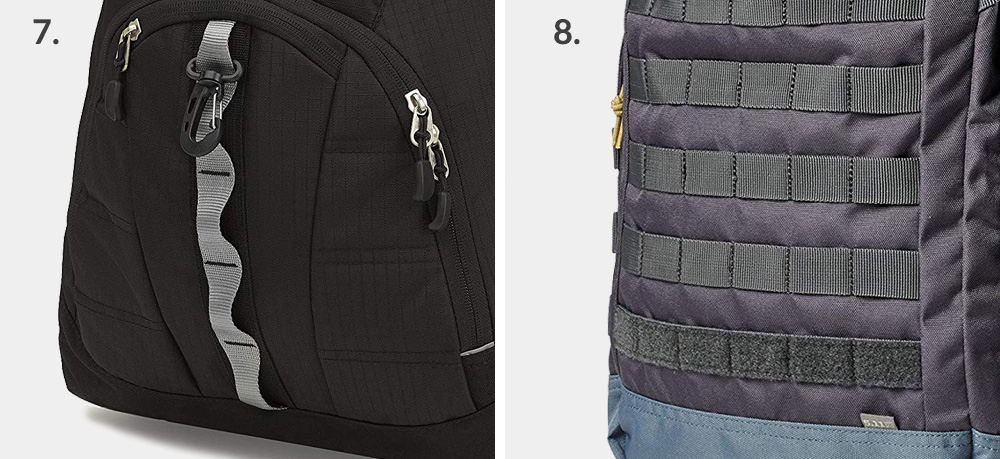

7. Daisy chains
Usually made of nylon webbing sewed into the backpack to create loops, daisy chains allow for things like carabiners, clips and external pouches to be attached to the outside of the backpack for extra storage. Daisy chains are mostly found in outdoor backpacks where external gear attachments are important but they can also be found in daily carry backpacks as a design accessory. Daisy chains are commonly found on the front and side of a backpack or on the shoulder straps.
Example: High Sierra Access II (Amazon)
8. MOLLE / PALS
MOLLE stands for “modular lightweight load-carrying equipment” and much like a daisy chain it is made of nylon webbing that is sewed into the backpack to create attachment points. Multiple MOLLE rows create a system called PALS which stands for “pouch attachment ladder system” and allows for a variety of attachments such as external gear pouches, canteen carriers and firearm magazine pouches to be attached to the outside of the backpack.
Although originally designed for tactical bags and gear, it’s not uncommon to see MOLLE webbing on fitness, travel and everyday backpacks that want to take advantage of this useful external attachment system.
Example: 5.11 Tactical Rapid Origin Pack (5.11)
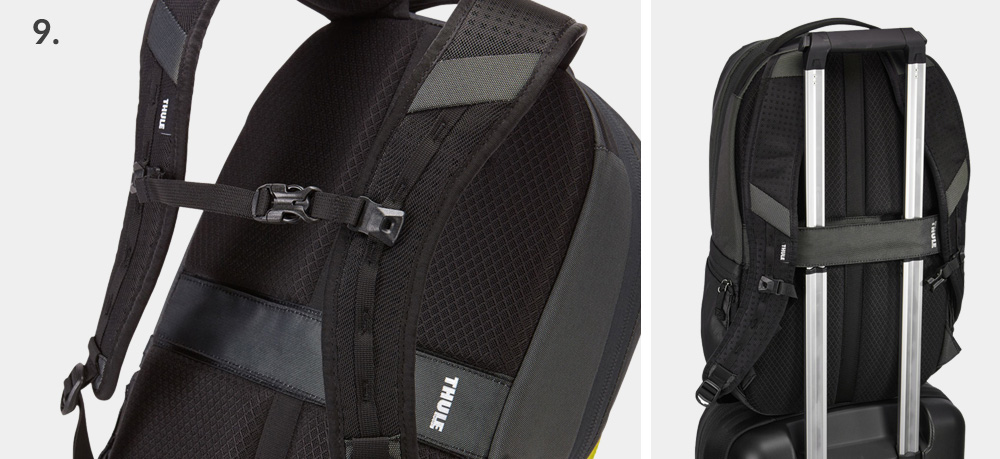

9. Trolley Sleeve
Have you ever noticed a sleeve or strap on the back of your backpack? It has a few names; trolley sleeve, luggage pass through sleeve, luggage slide over and its purpose is so that you can attach your backpack to the handles of your suitcase when traveling. It’s a neat feature that has grown in popularity with travel and business backpacks.
Example: Thule Subterra Backpack (Amazon)
Backpack frames and sheets
The purpose of a frame is to take the weight of a backpack’s load and help distribute it down to the hip belt. This is why backpack frames are usually reserved for technical outdoor backpacks that are made for carrying large bulky loads over long periods of time. For smaller bags such as daypacks, tactical and travel backpacks you are more likely to encounter frame sheets. Your typical daily carry backpacks are likely to have nothing at all.
Now let’s go over the difference.
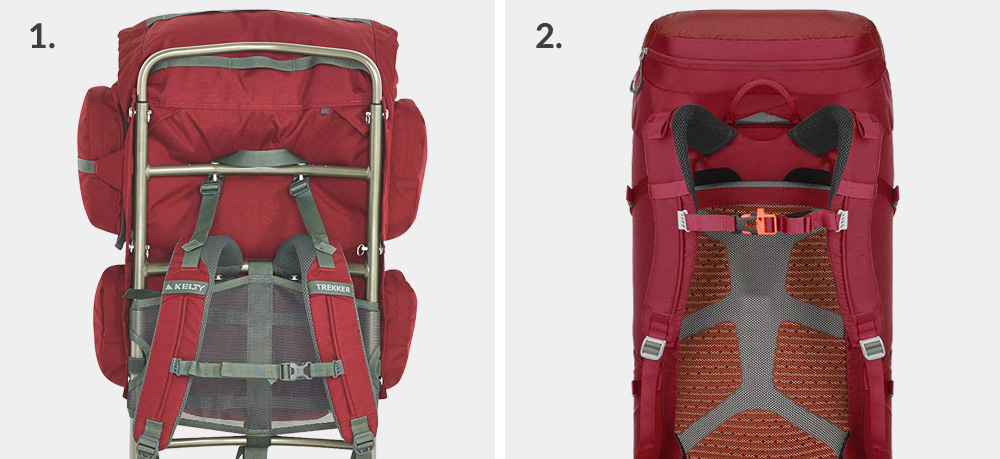

1. External Frame
External frames became popular in the 1960’s as a way to help carry heavy and uneven loads in outdoor and military backpacks. These frames are usually made of aluminum tubing that allow for large and uneven items to be carried. When paired with a hip belt, an external frame transfers the load weight to the hips for better stability and balance. External frames also offer amazing ventilation because of the air pocket between your back and the backpack that the frame creates.
Example: Kelty Trekker Hiking Backpack (Amazon)
2. Internal Frame
A majority of today’s framed outdoor backpacks feature an internal frame. Unlike an external frame, internal frames are embedded into the backpack and the backpack will rest directly onto your back when worn.
Internal frames allows the backpack to retain its shape even when stuffed full for the proper distribution of weight and more stability under load. Modern internal frames vary in material, shape and size. Some are body-hugging fiberglass sheets that mimic the curves of your back while others are just aluminum stays that help keep the backpack’s shape.
Example: Gonex Internal Frame Hiking Backpack (Amazon)


3. Frame Sheets
A frame sheet is a single piece of plastic that rests behind the back panel to keep the bag’s shape when worn. While most of the time a frame sheet is permanently embedded into a backpack, some brands allow you to remove or replace the frame sheet as needed.
The idea behind a frame sheet is to prevent the back panel from rounding when the backpack is stuffed full. To prevent this, a stiff frame sheet is placed against the back panel so that the backpack can rest correctly on the back when worn. This prevent stress on the shoulders and a more even weight distribution overall. Frame sheets are popular with backpacks that are made for carrying heavier loads such as tactical, outdoor and travel backpacks.
Example: Tom Bihn Synapse 25 with removable frame sheet (Tom Bihn)
4. Frameless Backpack
Most daily use backpacks are frameless backpacks. These are packs without any sort of frame whatsoever. You’ll know you have a frameless backpack when you can bend and fold the back panel with ease. Most frameless backpacks simply have mesh or padding on their back panels for comfort and weight distribution.
Example: Herschel Supply Co. Settlement Backpack (Amazon)


Look Ma, I can name all the parts of a backpack!
That concludes our anatomy of a backpack guide. Hopefully you have learned something fancy and new that you can apply to your next backpack purchase. If you want to learn more we encourage you to take a look at some of our other guides:
21 Types of Backpacks Visual Style Guide
How to Find a Backpack that Fits
Backpack vs Rucksack vs Daypack
How to Choose a Backpack for Work
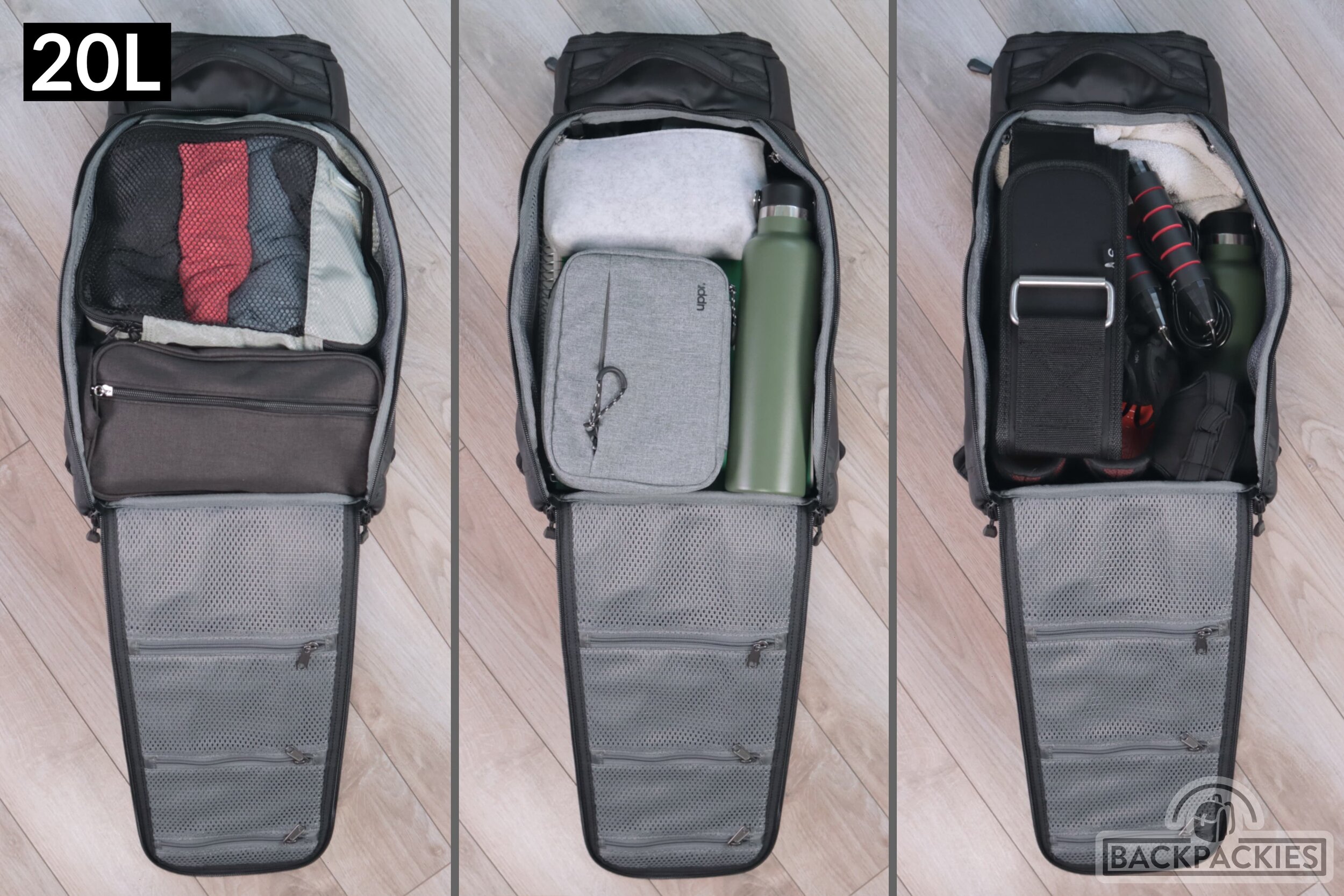 How Big is a 20 Liter Backpack? Visual 20 Liter Backpack Size Guide
How Big is a 20 Liter Backpack? Visual 20 Liter Backpack Size GuideHow big is a 20L backpack? In this size guide we explore what fits inside a 20L backpack for school, work, travel and the gym using real examples.
Read More →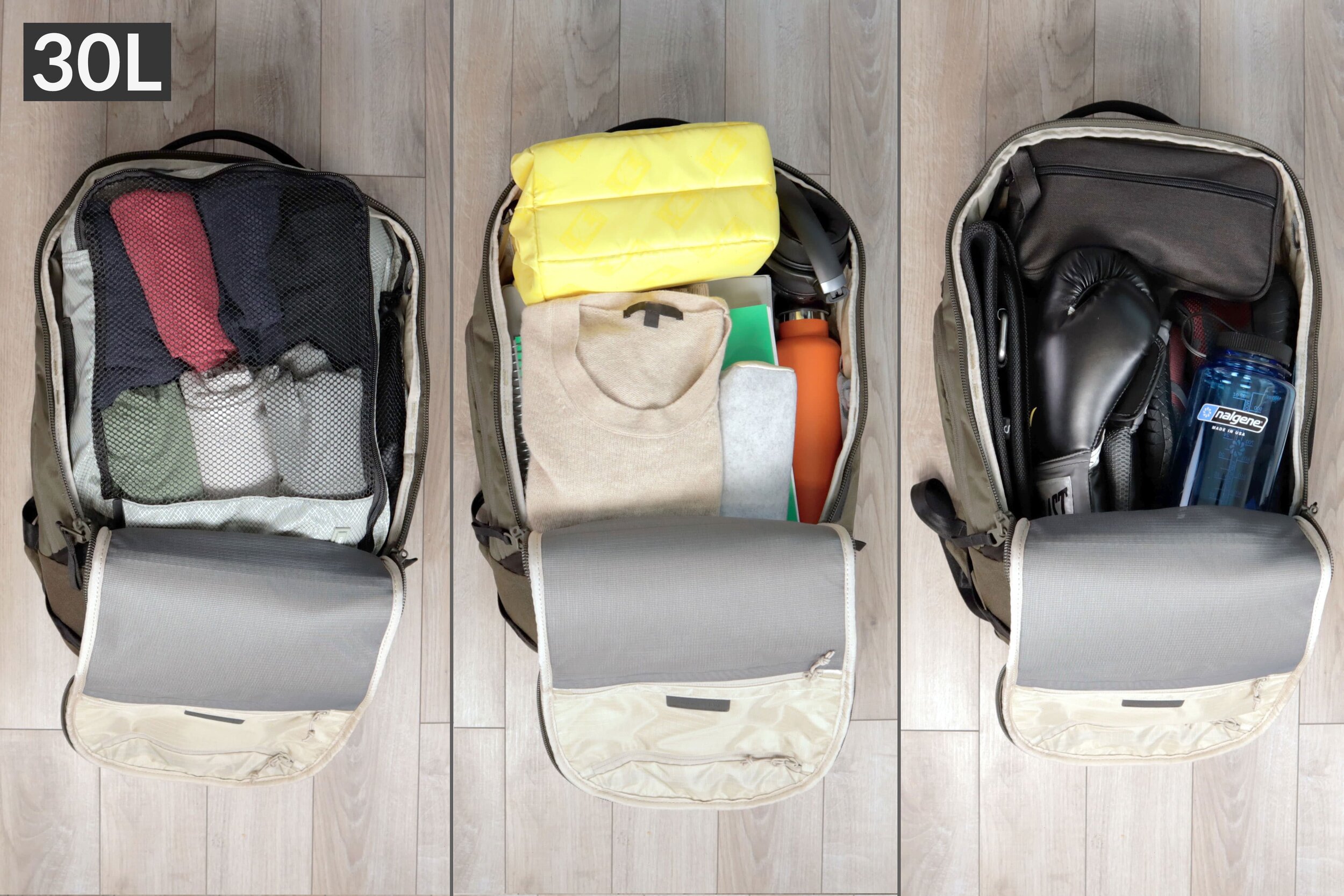 How Big is a 30 Liter Backpack? Visual 30L Backpack Size Guide
How Big is a 30 Liter Backpack? Visual 30L Backpack Size GuideHow big is a 30L backpack? In this backpack size guide we answer your questions with real examples.
Read More →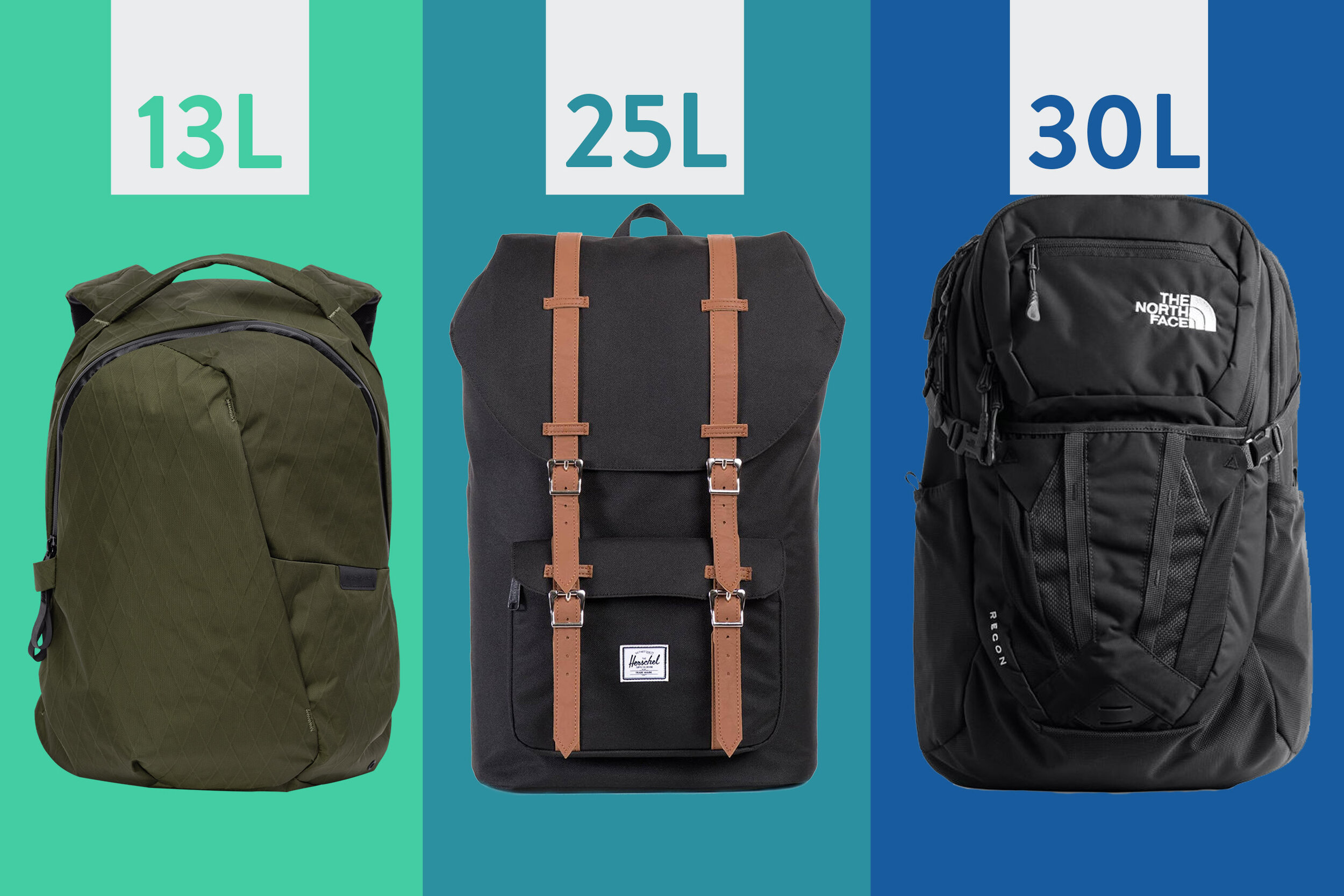 Ultimate Backpack Size Guide – What Size Backpack Do I Need?
Ultimate Backpack Size Guide – What Size Backpack Do I Need?What size backpack do I need? Find out what fits in a 16L, 20L and 30L backpack plus more useful info in this visual backpack size guide for school, work and commuting.
Read More →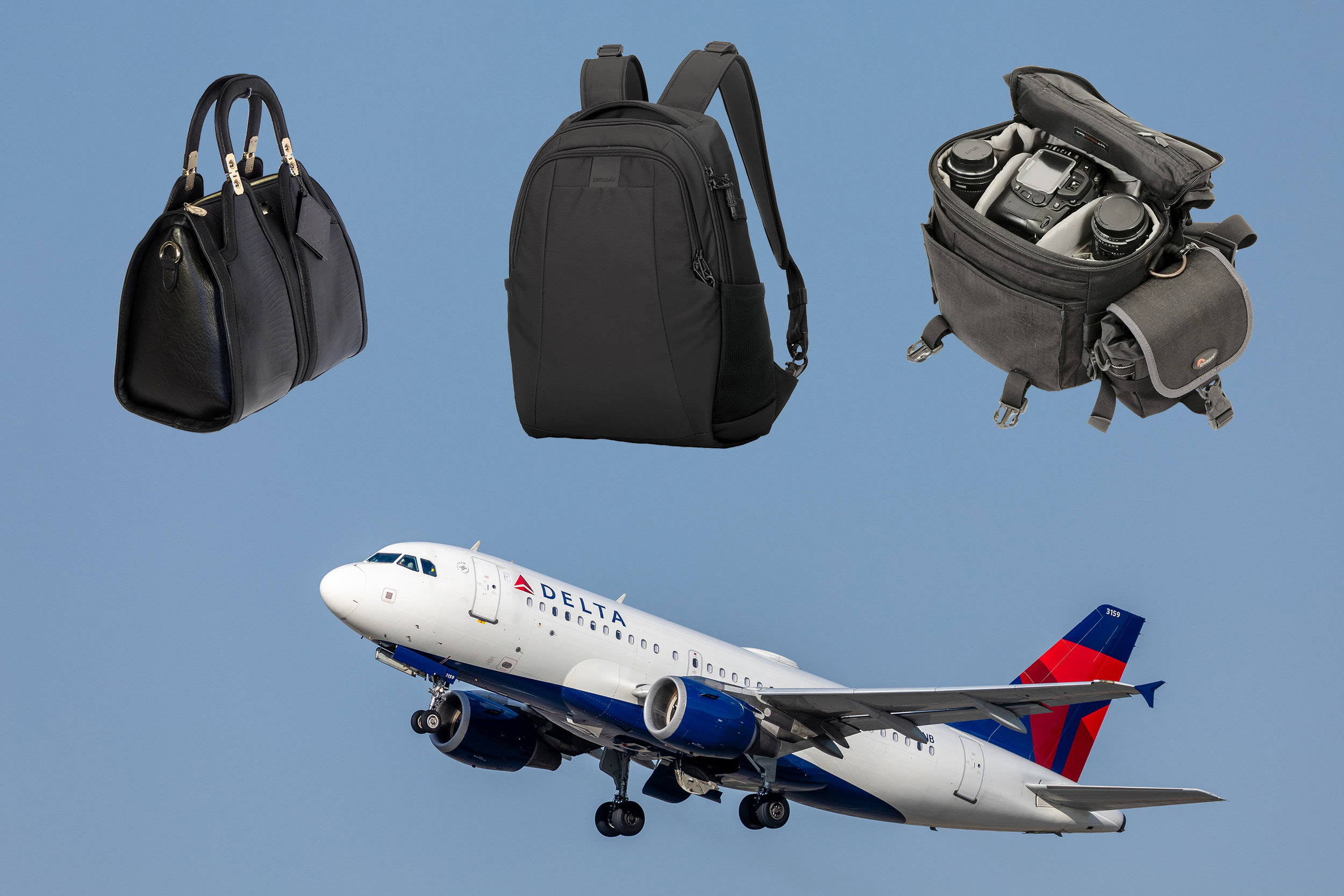 Delta Personal Item Size Guide for Backpacks, Bags and More
Delta Personal Item Size Guide for Backpacks, Bags and MoreIs a backpack a personal item on Delta? What is the Delta personal item size limit? We answer these questions and more in our Delta personal item travel guide.
Read More →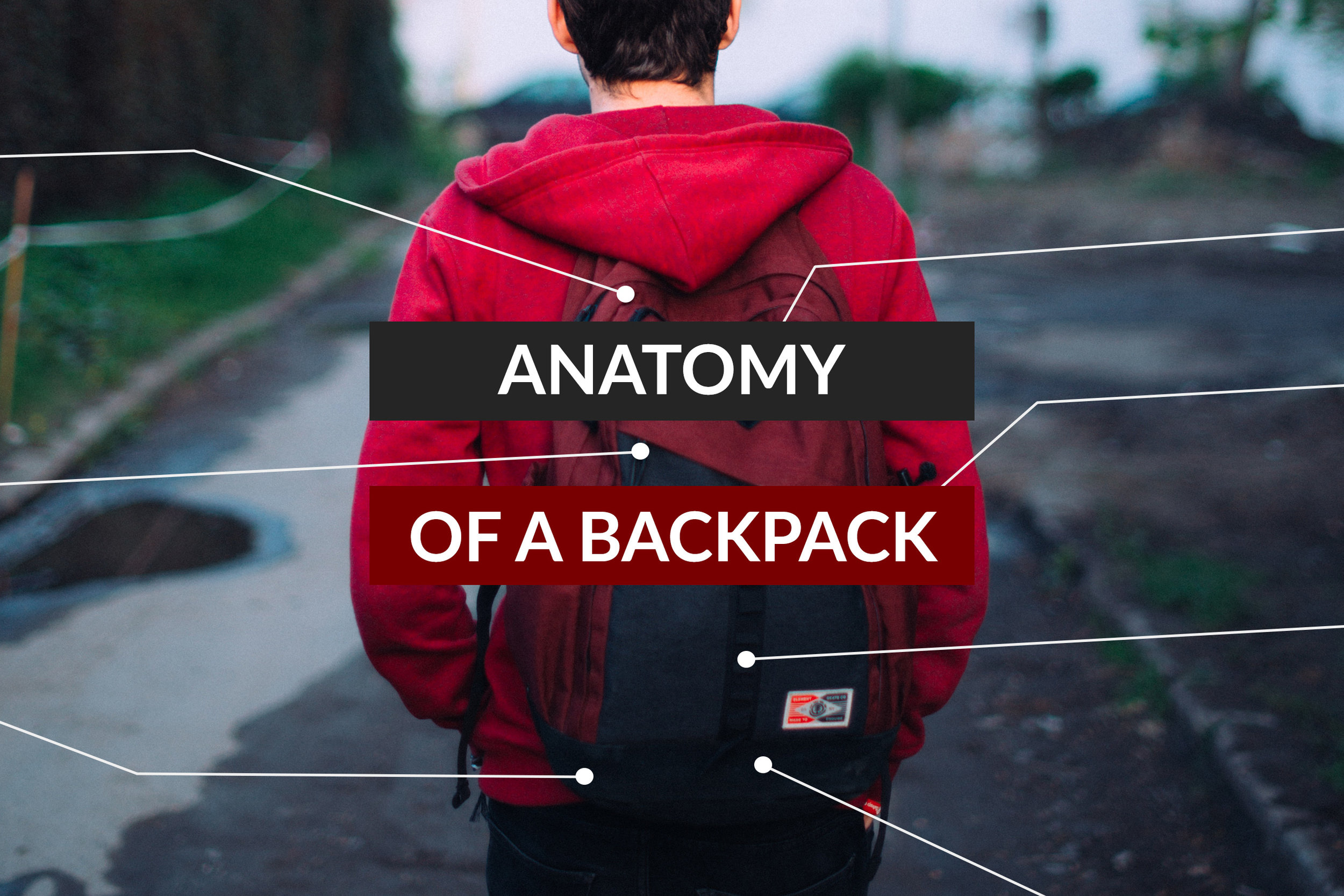 Anatomy of a Backpack – Definitive Guide to Parts, Straps, Loops and more
Anatomy of a Backpack – Definitive Guide to Parts, Straps, Loops and moreA definitive guide on common backpack parts and definitions. Learn all there is to know so you can make an informed choice when shopping for a new backpack.
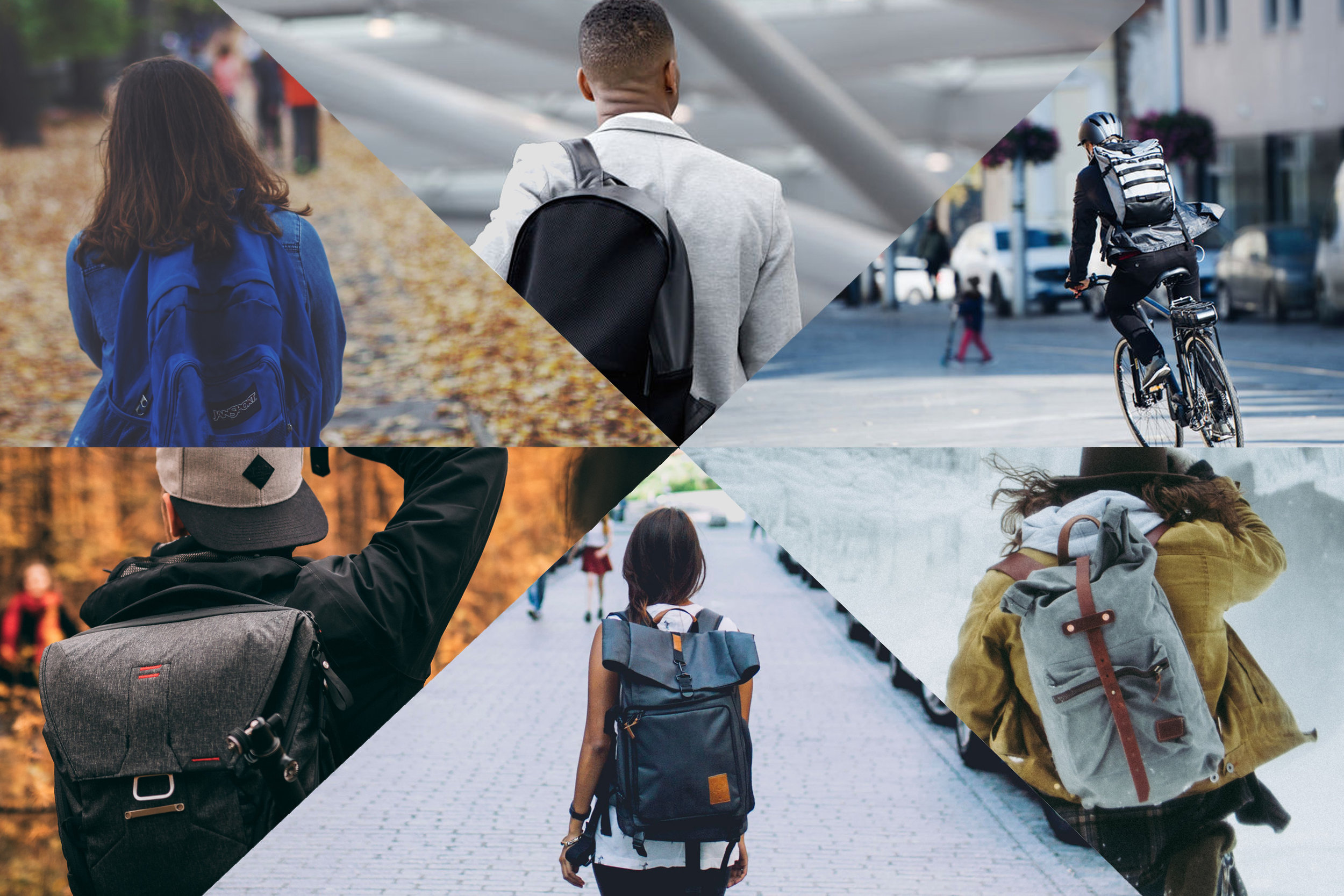 21 Different Types of Backpacks Explained – Visual Style Guide
21 Different Types of Backpacks Explained – Visual Style GuideWhich backpack is best for me? In this guide we break down the different types of backpacks by category with real life examples for each.
Read More →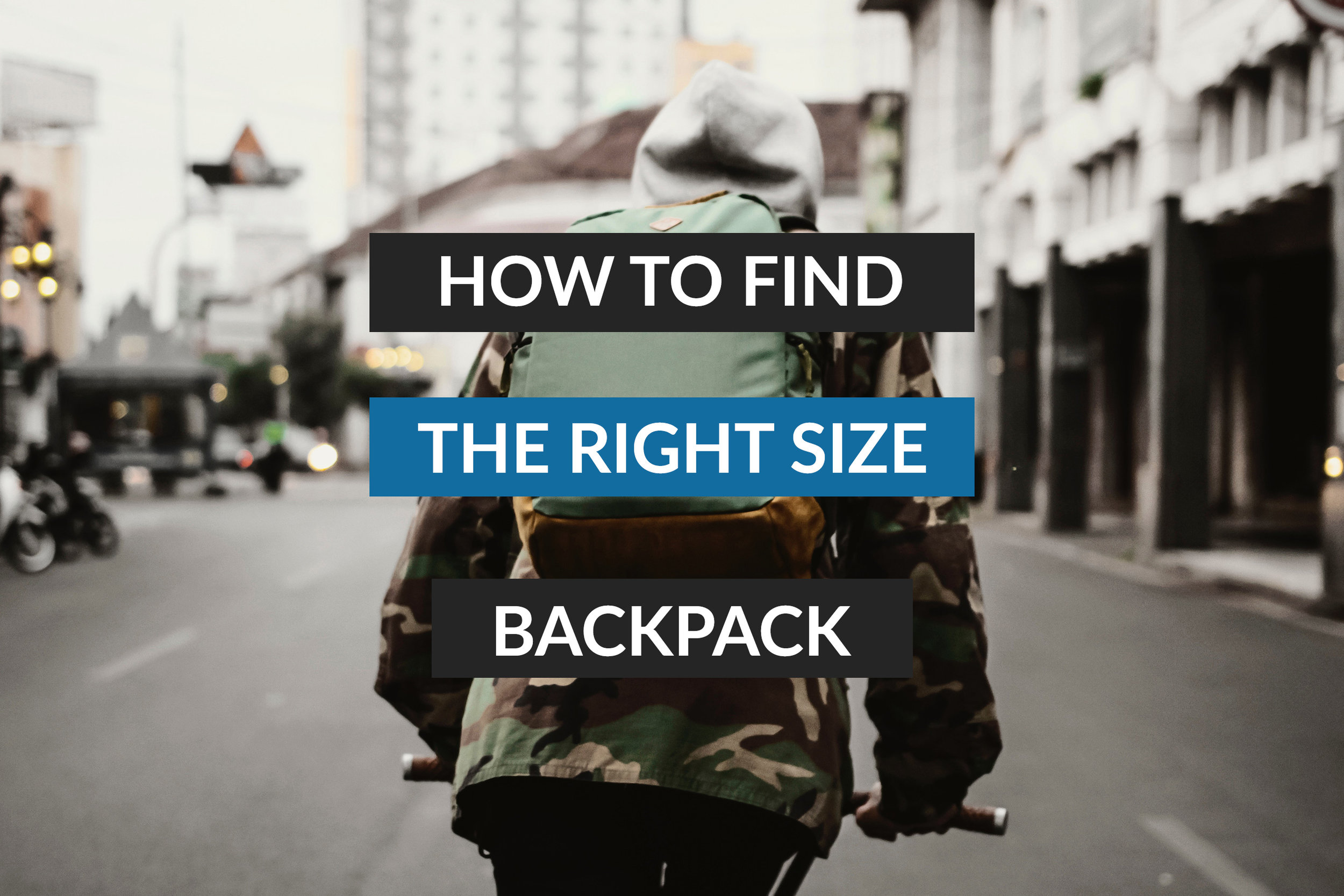 How to Find a Backpack That Fits (In 3 Steps)
How to Find a Backpack That Fits (In 3 Steps)How should a backpack fit? We explain how to find the right size backpack in 3 easy steps.
Read More → Wenger vs Victorinox vs Swiss Gear – What’s the difference?
Wenger vs Victorinox vs Swiss Gear – What’s the difference?Victorinox vs Wenger? Wenger vs Swiss Gear? Aren’t they all the same thing? This guide will answer your questions.
Read More →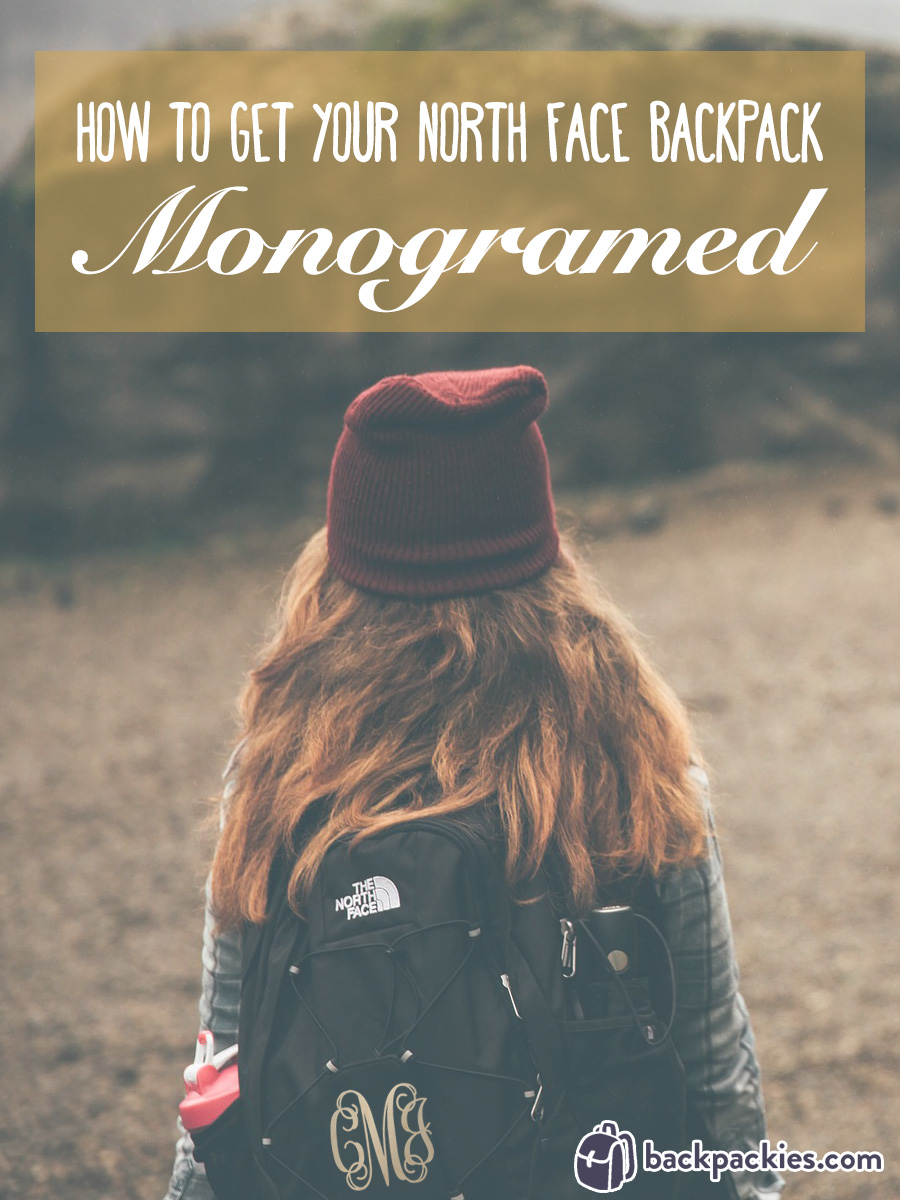 How to Get Your North Face Backpack Monogrammed
How to Get Your North Face Backpack MonogrammedWe’ve seen plenty of monogrammed North Face backpacks on campus and think they look really cute. But where is everyone getting them? Let’s find out.
Read More →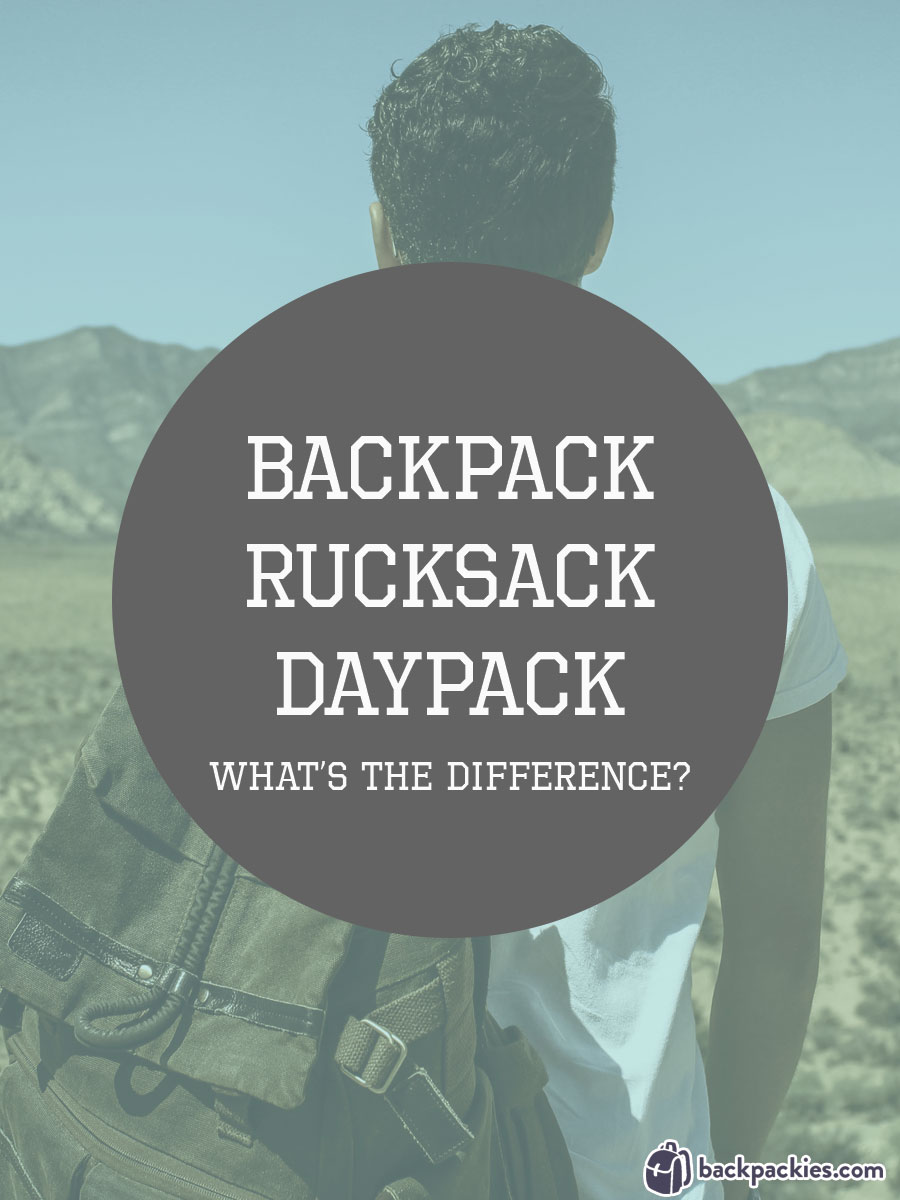 Backpack vs Rucksack vs Daypack – What’s the difference?
Backpack vs Rucksack vs Daypack – What’s the difference?What’s the difference between a backpack and a rucksack? What’s a daypack? We answer some common backpack terminology questions and define the difference.
Read More → Junyuan BagsTen articles before and after
Top 14+ Best Snowboard Backpacks [January 2022]
11 Best Waterproof Backpacks for College and Beyond | JUNYUAN
Top 17+ Best Small Tactical Backpacks [January 2022]
Top 13+ Best Jansport Backpacks [January 2022]
9 Best Concealed Carry Backpacks for Everyday Discreet CCW | JUNYUAN
Top 15+ Best Sling Backpacks [January 2022]
Herschel vs JanSport – Comparing the Pop Quiz and Right Pack | JUNYUAN
Top 16+ Best Anti Theft Backpacks [January 2022]
Kaukko vs Herschel backpack comparison – What's the difference? | JUNYUAN




 Mobile/What's App/Wechat
Mobile/What's App/Wechat E-Mail
E-Mail ADD
ADD




